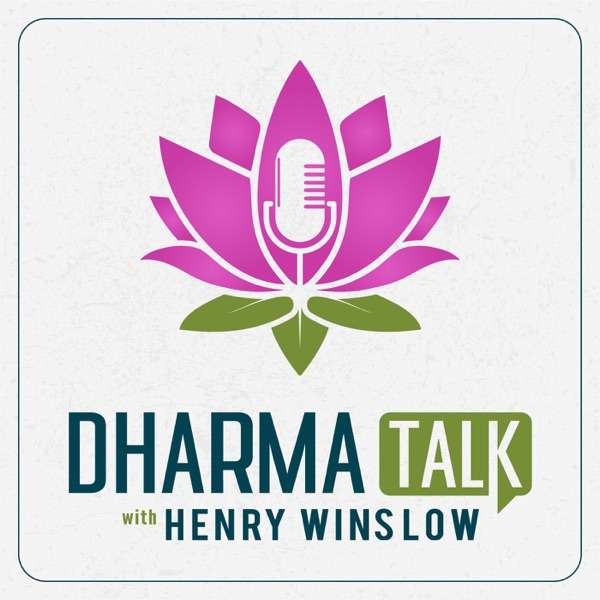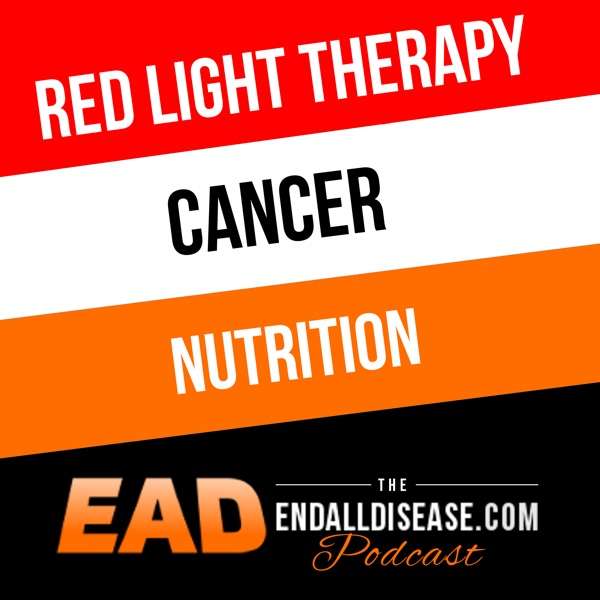00:50 – Introducing today’s inaugural AMA episode
01:03 – Dr. Stephanie introduces her co-host for today’s episode, Stephanie Major
06:19 – Differentiating between time restrictive eating and fasting
12:16 – Benefits of fasting
13:28 – Timing your post-workout meal
16:23 – Breaking down PCOS, polycystic ovarian syndrome
18:39 – The important role that hormones play
20:03 – Fasting with PCOS
21:49 – Why Dr. Stephanie never does an extended fast in the week leading up to her period
26:20 – The incredible differences in a woman’s biology
28:16 – Dr. Stephanie speaks to some recent studies on rodent fasting
32:27 – HPA Access Dysfunction
35:32 – How fasting can affect thyroid issues, including Hashimoto’s Disease
40:47 – Fasting and hair loss
41:54 – The three stages of hair growth
43:29 – Supplements to combat hair loss during fasting
44:34 – Best practices for preparing for an extended fast
49:10 – Signs and signals that indicate you should end an extended fast
52:05 – Breaking a fast
54:30 – Dr. Stephanie discusses fasting while travelling
57:44 – When Dr. Stephanie does longer fasts
58:41 – How to explain fasting to your children
1:04:19 – Who should not be fasting
1:05:37 – Dr. Stephanie announces another upcoming AMA episode
1:07:01 – Where listeners can follow Dr. Stephanie and subscribe to her newsletter
TWEETABLE QUOTES
“When you allow for the stomach to fully empty, you will have a better quality sleep.” (09:42)
“When she does eat her next meal, it should have protein in it, and a minimum of twenty grams. So, a minimum of twenty grams of good, quality protein to be able to drive that muscle protein synthesis from her diet.” (16:07)
“Around Day 21 is when we start to see progesterone rising. Progesterone is a potent stimulator of your appetite. It slows down your bowels. And it can also affect your mood and it drives cravings.” (23:05)
“When you are obese, male or female, the data is clear in terms of fasting and the benefits that it’s going to impart to you. So, if you are overweight, if you have excess adiposity fasting is probably the most powerful weight-loss tool on the planet.” (31:28)
“That’s why I always say females are the original biohackers. We will do anything to feel better.” (35:24)
“When you start fasting, it is a temporary change you may notice like clumps of hair falling out, but it tends to return somewhere between three to six months. You’ll notice that that falling out stops.” (41:40)
“When you’re thinking about what breaks a fast, you have to be thinking about what your goal is surrounding the fast.” (52:32)
LINKS MENTIONED
Better! Website
Dr. Stephanie’s Website
Dr. Stephanie’s Twitter – @dr_stephanie
Dr. Stephanie’s Instagram – @dr.stephanie.estima
Dr. Stephanie on LinkedIn
Dr. Stephanie’s Twelve Step Guide to Fasting
RELEVANT STUDIES, COMMENTARY, AND RANDOM BITS FROM MY PREP NOTES
Time Restrictive Eating (TRE) vs. FASTING
TRE - is restricting the hours in which you consume calories. This is where
I start most people off if they have never heard of the concept of fasting, or they are intimidated by it.
So very basic would be a TRE of 12 hours – 12 hours of fasting, 12 hours of eating starting at 7am - 7pm.
I would quickly move this to a tighter eating window of 8-9 hours as the baseline for how you eat all the time. If one were so inclined, and if you’re listening to this podcast, I would also add in the caveat of making your last meal 3 hours before your bedtime. This allows the stomach to fully empty, and for our central and peripheral clock to sync up.
SCN is your central clock. It detects light coming in from the back of the retina and is the sleep-wake cycle master regulator.
However, we have other clocks in our bodies: the liver, pancreas, and kidneys, for example. The liver in particular senses intake of food.
If you have a late meal, there is a sort of homeostatic dissonance where the brain is saying ‘less light, time for bed,’ but the liver is saying, ‘but we just got a huge bolus of energy!’ This will affect sleeping quality and quantity. It is hard to sleep well on a full stomach.
If you listen to Sachin Panda, he will say anything with a caloric value will start the clock. So, in the strictest sense, the 5 calorie pre workout drink would start the clock. As far as I am aware, Mg does not have a caloric value, and neither does L-theanine.
FASTING is for 24 hours or more and there’s a myriad of ways to do it: Water only, NC LF, or CR.
Benefits are similar and, like anything, has a bell shaped curve:
- drops in insulin
- activation of sirtuins
- Autophagy - cellular cleaning up of debris
- BDNF
- improve lipid profiles ( HDL: LDL ratio, TG levels)
- allow for rest and repair of gut
- FFA & ketone production / alternative substrate
- mental clarity and focus
- amps up GH
- changes in gene expression upping longevity / FOXO
- cardioprotective benefits
- Powerful weight loss tool
On Refeeding Within 15-30 Minutes Of Exercise:
There has been considerable work undertaken to determine the optimal timing of nutritional intake in order to maximize post-exercise MPS and ensuing adaptations to training (Cribb & Hayes, 2006; Hoffman et al. 2009). In general, it is largely irrelevant whether the feed is given pre-, during or post-exercise. This is because the delaying of the muscle-full response appears to last at least 24 hours (Burd et al. 2011) after a single bout of exercise, which may help explain adaptations likehypertrophy/remodelling of muscle over time, which is independent of proximity-dependent feeding patterns.
Types of Exercise:
Endurance-type exercise such as running or cycling is associated with increased synthesis of mixed muscle proteins. However, these acute responses are not associated with significant changes in muscle mass (i.e. hypertrophy observed with resistance exercise).
The same individuals performed a 10-week resistance (weight-lifting) programm in one leg and a 10-week endurance (cycling) programm in the other. After training, post-exercise myofibrillar not mitochondrial protein synthesis increased with resistance exercise (Wilkinson et al. 2008). Conversely, after training mitochondrial protein synthesis increased only in the endurance-trained leg, whereas myofibrillar did not. These data seem to suggest a ‘matching’ between MPS responses and phenotypic changes, i.e. muscle hypertrophy in resistance training versus mitochondrial biogenesis in endurance training.
I have a general disdain for traditional cardio machines and feel like I am on a hamster wheel. I have retrofitted my outdoor bike with a TacX and use an app called ZWIFT so I can have some sort of indoor cardio in the winter months. I love to climb hills, have a psychological and physical resistance to sprints. I have to pump myself up mentally and physically when I know I’m sprinting, but generally I hate them. If I were to guess, I have way more type 2a mm fibres than 2b, because I despise sprints. It feels like I peter out and need a much longer recovery. This may be due to my years as a step instructor and being an endurance runner.
Best practices:
- Vary workload and intensity
- Aim for at least 20g of good quality protein per meal(this can change as we age, necessitating the need for more protein to continue to stim MPS)
A few more studies should one want to read up further:
No effect on protein supplement timing:
https://www.ncbi.nlm.nih.gov/pubmed/19478342/
24h window for refeed:
https://www.ncbi.nlm.nih.gov/pubmed/21289204/
20g for MPS:
https://www.ncbi.nlm.nih.gov/pubmed/19056590/
PCOS & Fasting:
- Insulin levels elevated:
- inverse relationship to SHBG (high insulin, low SHBG, more free T)
- direct relationship with LH (high insulin, higher LH, lower relative surge before ov)
Insulin is a nutrient sensor. You eat carbohydrates or proteins, and insulin goes up. This signals to the body that there is sufficient food to drive growth. (There are other nutrient sensors involved - mTOR and sirtuins, but let’s stick right now to insulin and its role in PCOS)
High insulin levels drives growth. For women of reproductive age, the ovaries are the queen of cells. They have 100-600K mitochondria in them, and are the most rapidly growing cells in the body.
The other issue excess insulin has on a reproductive female is is drives up LH. LH levels should only surge right before ovulation, to help the mature follicle release the viable egg. If LH levels are higher throughout your cycle, the egg cannot be released. I always liken LH to that uncle that comes over for dinner, slaps you on the back so hard to make you spit out your food. That is basically what LH is doing to your follicle.
Insulin has an inverse relationship the shbg. Shbg will, like its name suggests, bind sex hormones, like testosterone. Sex steroids and thyroxine are shbg regulators, but so is insulin. More insulin, less shbg, meaning more testosterone is free and able to exhibit its masculinizing effects.
So when we are fasting, we are not stimulating insulin to rise, and therefore will see a lowering of LH throughout the cycle, and an increase in shbg, which will lower free T.
With PCOS patients, fasting is a powerful tool to help regulate this hormonal derangement. At the very least, depending on the severity of symptoms and the patient’s goals, a TRE of 8 hours. I would also be strongly inclined to throw in several OMADS, and potentially a monthly or quarterly long fast in there as well if there was excess adiposity.
I would also be looking at other lifestyle changes, like weight lifting with a focus to increasing lean mm to assist in further insulin regulation and glucose disposal.
On Females & Fasting:
Fasting for women is different for men and women. We do see some gender specific differences. For obesity, whether male or female, the benefits are largely ubiquitous. It is when you get closer to normal BMIs that the data begins to differ. Some rodent studies have demonstrated deleterious effects on females and either alternate day fasting or prolonged CR.
Males
- improved insulin sensitivity
- waking and sleep patterns were uninterrupted,
- they were more fertile (gonadal transcription factors),
- Improved lipid profile
Female rats ‘masculinize’ - meaning their ovaries shrunk,
With 20 CR:
- irregular cycling patterns
With 40% CR:
- they ceased ovulation and menstruating altogether
- became hyper alert,
- learning and memory went up,
- sleep patterns were disrupted,
- heightened stress response,
- Upregulated BDNF
- Increased adrenal size
In human females
- ADF showed poor glucose tolerance and no change in insulin sensitivity in non-obese women
- did not see this negative effect with men, and only the men showed improvement in TG levels
So what do we as women do?
So if you are overweight, fasting is going to be a good option for you to reduce adiposity, and to help regulate metabolic hormones. Most of the studies I have looked at that detail fasting interventions report positive outcomes in cardio metabolic parameters.
It is when we trench into waters of hormonal issues, and also fasting with women who are not obese, where things can get murky. Even women with the same condition are going to be different. You are not the same hormonal each day of your cycle. We are just extra like that.
Must consider:
HPA Axis Dysfunction
- chronic low grade stress (physical, chemical, emotional)
- pro -inflammatory - pro cytokines
- long term fasting is a stress, and may contribute to the allostatic load
- short term fasting like TRE is appropriate
- most women have some sort of HPA derangement until proven otherwise
- pregnant, delivered a child, sleepless nights associated with kids, and then if you work...good luck
PCOS
- in this condition, our bodies behave more male
- fasting, especially longer term fasting on a monthly or quarterly basis is great
- allows for the drop in insulin, and can lend to better T regulation
For women like myself who are not obese, do not have hormonal issues, what do we do?
The truth is the jury is completely out, and we do not have enough literature to really tell us either way. I think there are measurements you can watch: ketone levels, glucose levels, and subjective observations that can help you monitor your fast. But, I would definitely seek counsel in a trusted primary care physician so you can be monitored while doing it.
I personally TRE everyday - it is around 4-5 hour eating window when I eat. While I love eating, I find it incredibly distracting and annoying to getting into my work, so I will have a large meal around 11am, and then a snack with the kids when they get home. Usually no dinner.
For women of reproductive age, there is no wrong time to fast, but there are decidedly easier and more difficult times
Again, talking in depth about gaming your menstrual cycle for metabolic and body comp gains soon, but the first week of your period - when P and E are low is much easier than the week leading up to the bleed.
Reproductive Function in Response To Fasting
https://journals.plos.org/plosone/article?id=10.1371/journal.pone.0002398
https://journals.plos.org/plosone/article?id=10.1371/journal.pone.0004146
Alternate Day Fasting in Humans
https://www.ncbi.nlm.nih.gov/pubmed/15833943?dopt=Abstract
https://academic.oup.com/ajcn/article/81/1/69/4607679
Sex Differences
https://www.ncbi.nlm.nih.gov/pmc/articles/PMC3200169/?tool=pubmed
https://academic.oup.com/ajcn/article/85/4/981/4648934
Obese Females & Fasting
https://www.ncbi.nlm.nih.gov/pubmed/23171320
https://www.ncbi.nlm.nih.gov/pubmed/29534545
On Autoimmunity & Fasting
https://www.ncbi.nlm.nih.gov/pubmed/27239035
On Fasting & Hair Loss
3 Distinct Phases of Hair Growth
Anagen Phase is the active growth phase. It lasts anywhere from 2-6 years and is largely genetic in terms what your window is. It could be up to 1 cm every 28 days.
Catagen Phase - follows the anagen growth phase
- transitional stage where growth stops, somewhere around 2-3 weeks
- follicle stops producing fiber
Telogen Phase
- resting phase
- When the body is subjected to extreme stress, as much as 70 percent of hair can prematurely enter the telogen phase and begin to fall, causing a noticeable loss of hair
- 3 months in length
Reasons for Hair Loss
It’s not the fasting per se, but the large, sudden change in calories. The body repurposes energy for vital function (brain > hair). It can also be caused by vitamin & mineral deficiency. Zinc has been shown to be a cause of hair thinning. As you use up glycogen stores, your kidneys excrete excess water, Na, zinc, Mg, K.
Hair loss can also be affected by the supplement or foods once you resume eating (ex. beef, lamb, chicken, mushrooms). It can be caused by not getting enough protein in your diet (aim for 20-30g good quality protein per meal). When you do start eating again, making sure you are getting adequate biotin, which is known to increase hair thickness.
Foods with biotin
- eggs w yolk
- avocadoes
- salmon
- spinach
MSM - methylsufonylmethane - forms the structural links in things like skin, hair, and nails and strengthens cartilage and tissue
- found in animals & animal proteins
Collagen - (from bone broth or supplementation)
Lack of collagen has been linked to early hair loss, hair thinning, hair graying, and spine degeneration.
ENJOYING THE SHOW, READY FOR MORE?
Please Subscribe to Better! With Dr. Stephanie
Join our Private Facebook Community for Better!
Rate and Review: Show your support and help spread the word by writing a review, along with a 5-star rating on Apple Podcasts: https://bettershow.co/apple
🎙️🎙️🎙️
Podcast production and marketing provided by FullCast
Hosted by Simplecast, an AdsWizz company. See pcm.adswizz.com for information about our collection and use of personal data for advertising.

 Our TOPPODCAST Picks
Our TOPPODCAST Picks  Stay Connected
Stay Connected







